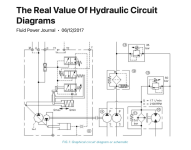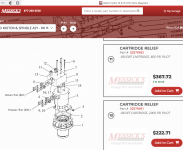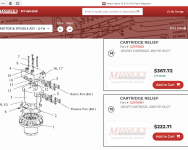rScotty
Super Member
- Joined
- Apr 21, 2001
- Messages
- 9,645
- Location
- Rural mountains - Colorado
- Tractor
- Kubota M59, JD530, JD310SG. Restoring Yanmar YM165D
No, if they squeal they overheating the hydraulic oil. That can ruin the hydraulic fluid. It may have done so. Smell it.A small update. I'm trying to relax a bit today but, couldn't resist the attraction of getting out in the hot & humid sun to swap the reliefs.
Yesterday, when I cut (three foot tall grass/weeds) it cut and at times, got overloaded and blades essentially slowed down and nothing happened.
Today, swapped the reliefs on both outer wings (same circuit) and cut a swath where I left off yesterday.
Did a poor job cutting BUT, one of the reliefs was screaming like a banshee..... so, without gauges, loosened the locknut and tightened the allen screw down about two turns.
Still squeels but cutting 'better'. I raised the cutting height and did better again however, still squeeled when I got into non-cut stuff.
Vague memory....I seem to recall what drove me to get the reliefs replaced. If I recall correctly, it was the LEFT wing that was cutting poorly and now, it's the right one.
Question since I don't know anything about the reliefs... Do they need to be (pardon my word) a bit 'in balance'? Meaning, if one squeals at say 3 turns out but does NOT squeal at say, six turns out, that is telling me the six turns out is acting more like a bypass.
So if three turns makes it squeal.....would the OTHER side need to be at the same number of turns?
To be fair, I am at times, cutting pretty thick stuff and it's not been cut anywhere from end of last summer to a full year PRIOR. So I have some that's three feet high, some that is six feet high and all between.
I was in some of the very tall, thick stuff, was pulling up a hill and tractor started bogging down to the point I had to clutch it as I was fearing it would stall. (I think it's rated at 100-125 PTO)
Sounds to me like you need to slow down & lighten the load.
And get the reliefs set right. If you don't know, set them at 2850 psi. Any tractor shop will have a pop gauge and can set them in 5 minutes.



